Camille Avestruz, Physics, University of Michigan – Modeling Giants in our Universe: Galaxy Clusters as Probes of Cosmology
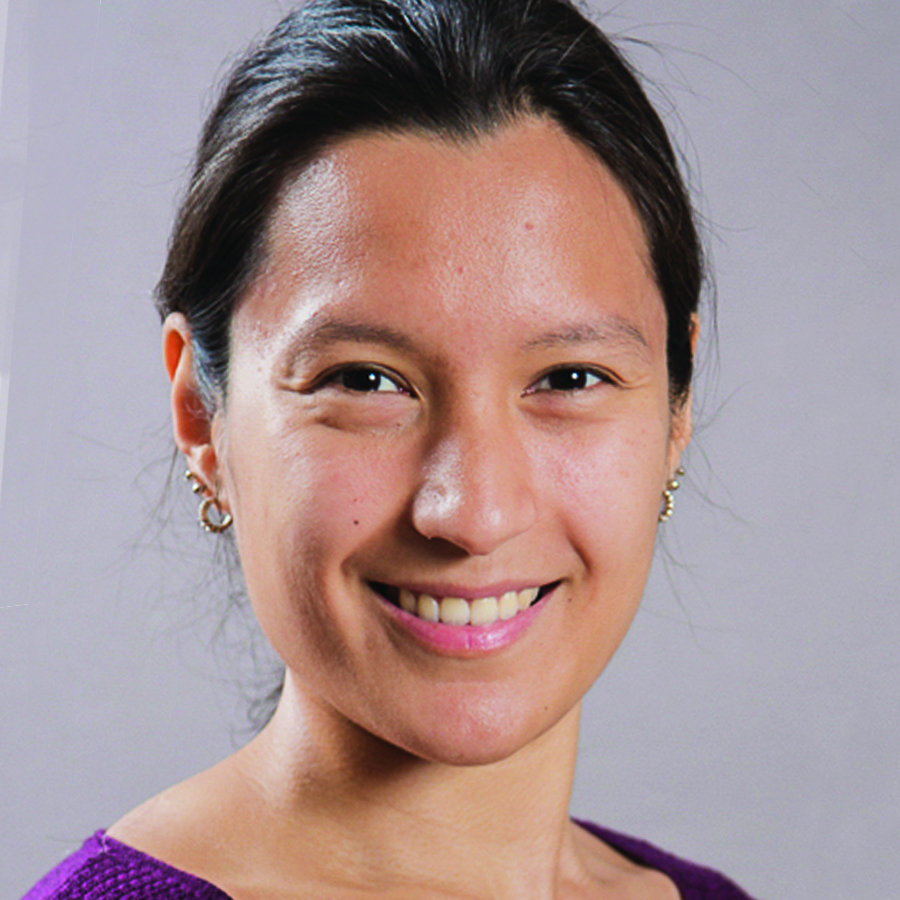 “Galaxy clusters are the giants of our universe, made up of hundreds to thousands of galaxies. The number count and distribution of galaxy clusters over time trace the history and content of our universe, otherwise known as cosmology. We can detect and measure galaxy clusters using light from the night sky across the electromagnetic spectrum – this includes light in wavelengths of the microwave and X-rays. To interpret these measurements in the era of big data, we need fast modeling techniques and inference methodologies. In this project, my group will leverage new methods to construct physically motivated statistical connections between the underlying matter content of galaxy clusters and what we can see in the night sky, and incorporate machine learning approaches to speed up inference for galaxy cluster cosmology. My education plan for this award focuses on the development and integration of computer coding skills in the introductory physics laboratory sequence for a broad range of undergraduates in the physical sciences. Students will gain fluency with Python coding through task-based learning applied to a combination of laboratory and simulated data. Tasks center on the three main stages of any data analysis procedure: data generation/input/output, data wrangling and pattern extraction, and data visualization. By introducing early scaffolded Python skill development, I aim to increase access, community, knowledge integration, and post-graduate career options for our undergraduates.”
“Galaxy clusters are the giants of our universe, made up of hundreds to thousands of galaxies. The number count and distribution of galaxy clusters over time trace the history and content of our universe, otherwise known as cosmology. We can detect and measure galaxy clusters using light from the night sky across the electromagnetic spectrum – this includes light in wavelengths of the microwave and X-rays. To interpret these measurements in the era of big data, we need fast modeling techniques and inference methodologies. In this project, my group will leverage new methods to construct physically motivated statistical connections between the underlying matter content of galaxy clusters and what we can see in the night sky, and incorporate machine learning approaches to speed up inference for galaxy cluster cosmology. My education plan for this award focuses on the development and integration of computer coding skills in the introductory physics laboratory sequence for a broad range of undergraduates in the physical sciences. Students will gain fluency with Python coding through task-based learning applied to a combination of laboratory and simulated data. Tasks center on the three main stages of any data analysis procedure: data generation/input/output, data wrangling and pattern extraction, and data visualization. By introducing early scaffolded Python skill development, I aim to increase access, community, knowledge integration, and post-graduate career options for our undergraduates.”
Lucas Busta, Chemistry, University of Minnesota Duluth – Using Artificial Intelligence to Predict Enzyme Products and Enhance Chemical Education
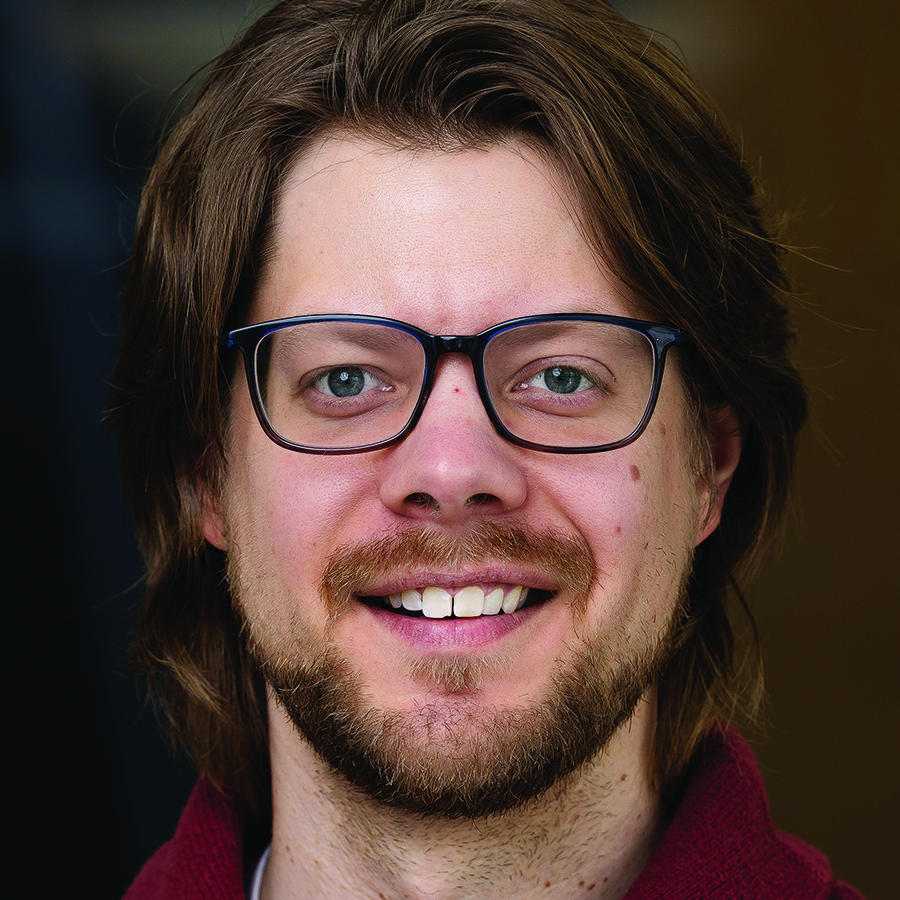 "As a Cottrell Scholar, I will be working on developing methods with which we can use large language models (artificial intelligence) to predict the precise chemical reactions that are catalyzed by specific DNA and protein sequences. This will involve experimentally determining the chemical reactions catalyzed by more than 100 different DNA fragments and then training language model and machine learning systems on those experimentally determined properties so that the systems can make predictions about sequences they have not seen before. In parallel, I will develop and evaluate teaching tools and instructional modules designed to teach students about the strengths, weaknesses, and applications of language models systems. These teaching tools and research findings will be shared with the scientific community so that others can leverage the advances made as part of this project.”
"As a Cottrell Scholar, I will be working on developing methods with which we can use large language models (artificial intelligence) to predict the precise chemical reactions that are catalyzed by specific DNA and protein sequences. This will involve experimentally determining the chemical reactions catalyzed by more than 100 different DNA fragments and then training language model and machine learning systems on those experimentally determined properties so that the systems can make predictions about sequences they have not seen before. In parallel, I will develop and evaluate teaching tools and instructional modules designed to teach students about the strengths, weaknesses, and applications of language models systems. These teaching tools and research findings will be shared with the scientific community so that others can leverage the advances made as part of this project.”
Bassil El-Zaatari, Chemistry, Davidson College – Catalyzing Dynamic Exchanges in Polymers and the Classroom
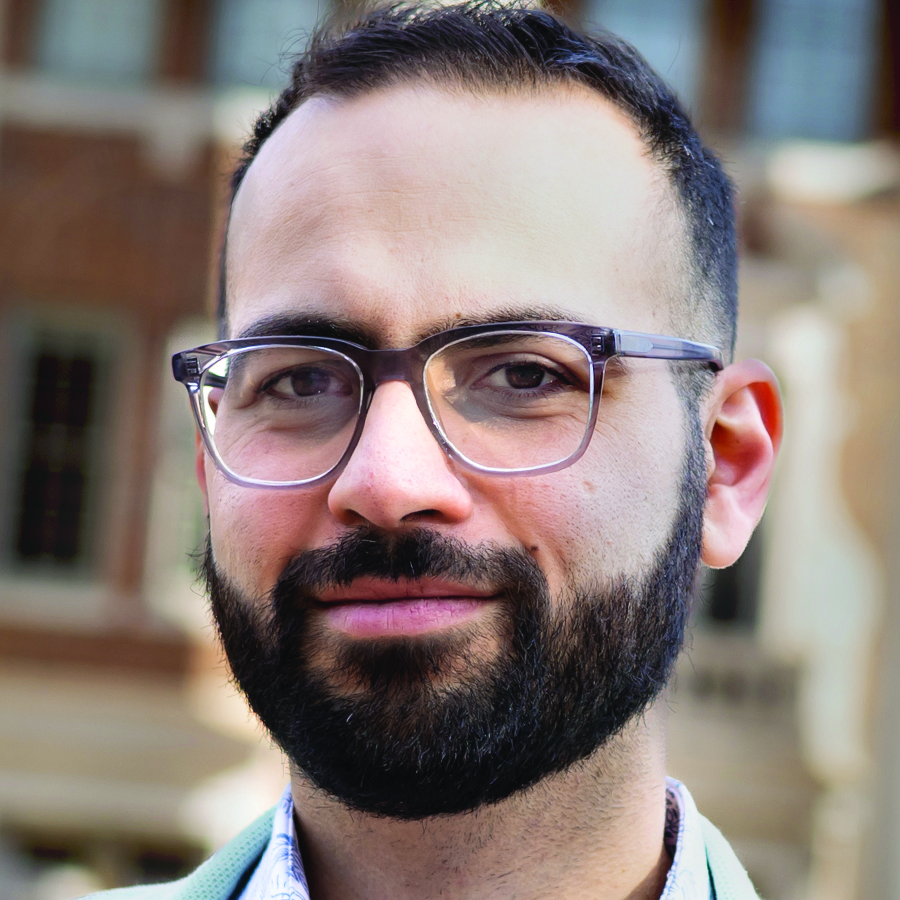 “Synthetic polymers, or plastics, have become an integral part of daily life. However, the continued buildup of inherently non-recyclable plastics such as cross-linked thermosets represents a major environmental problem necessitating more sustainable alternatives. One method of tackling this problem is through the design of polymeric materials that utilize dynamic covalent chemistry within the material, which can afford reprocessability under specific stimuli. Our work will target the development of photoactivated catalysts that can enable such dynamic exchange reactions within silicone-based polymers. While heat is traditionally employed as a stimulus for triggering these exchange reactions, the use of light offers spatial and temporal control, allowing for precise and targeted modulation of material properties. My educational efforts will aim to improve chemistry education at Davidson College by providing students with a more holistic understanding of how chemistry intersects other fields such as environmental science, public policy, economics, and the social sciences. Through the development of deliberative debate labs in our general chemistry course and systems of thinking modules in our polymer chemistry course, I aim to enhance students’ conceptual understanding of chemical principles while connecting it to real-world challenges.”
“Synthetic polymers, or plastics, have become an integral part of daily life. However, the continued buildup of inherently non-recyclable plastics such as cross-linked thermosets represents a major environmental problem necessitating more sustainable alternatives. One method of tackling this problem is through the design of polymeric materials that utilize dynamic covalent chemistry within the material, which can afford reprocessability under specific stimuli. Our work will target the development of photoactivated catalysts that can enable such dynamic exchange reactions within silicone-based polymers. While heat is traditionally employed as a stimulus for triggering these exchange reactions, the use of light offers spatial and temporal control, allowing for precise and targeted modulation of material properties. My educational efforts will aim to improve chemistry education at Davidson College by providing students with a more holistic understanding of how chemistry intersects other fields such as environmental science, public policy, economics, and the social sciences. Through the development of deliberative debate labs in our general chemistry course and systems of thinking modules in our polymer chemistry course, I aim to enhance students’ conceptual understanding of chemical principles while connecting it to real-world challenges.”
Tyler Engstrom, Physics, University of Northern Colorado – Prestress-Generated Odd Elasticity with Applications to Waveguides
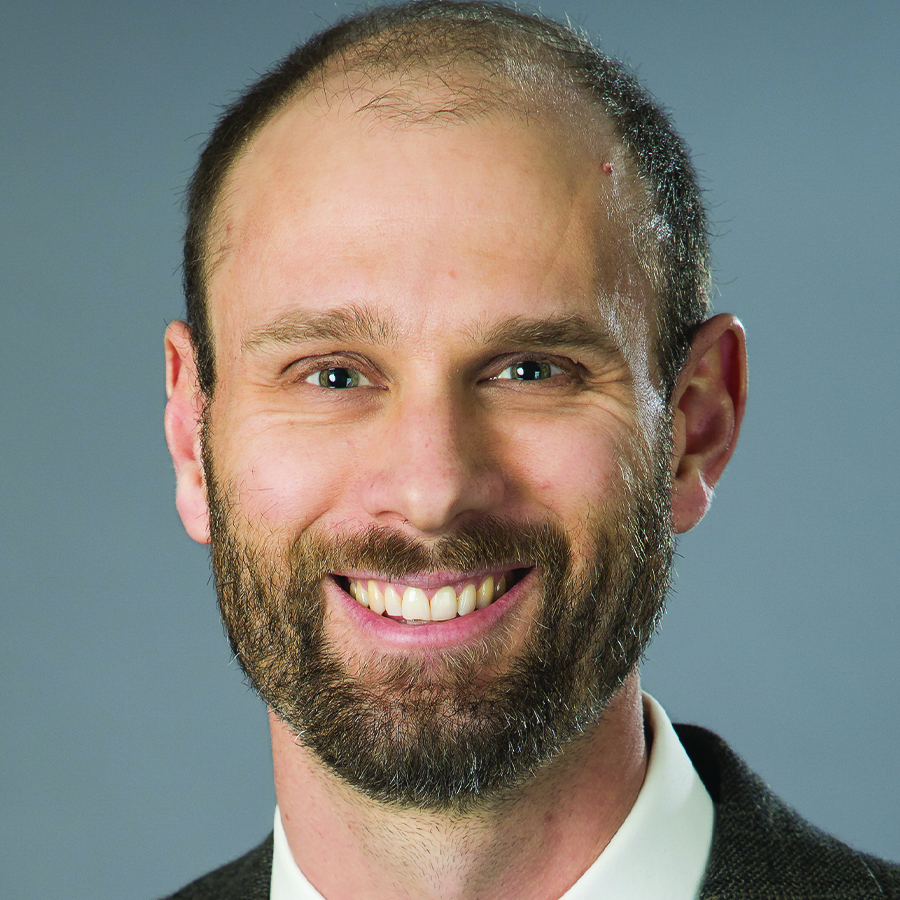 “Odd elasticity refers to a specific kind of anti-symmetry in the equation relating stress and strain in solids, as well as the unusual mechanical behaviors that accompany this mathematical structure. Work from the past several years has shown that odd elasticity can arise in non-traditional solids composed of active or driven constituents, with applications ranging from new engine concepts to robotic metamaterials to one-way waveguides. The Cottrell Scholar award will support my theoretical investigations into a new way to generate odd elasticity: from certain stresses present in the reference configuration about which a solid deforms, with an emphasis on exploring waveguide phenomena and applications. The award will also help me promote and increase summer undergraduate research and internship opportunities for physics majors at the University of Northern Colorado, particularly those who are first-generation and/or underrepresented, and who stand to benefit most from these high-impact practices."
“Odd elasticity refers to a specific kind of anti-symmetry in the equation relating stress and strain in solids, as well as the unusual mechanical behaviors that accompany this mathematical structure. Work from the past several years has shown that odd elasticity can arise in non-traditional solids composed of active or driven constituents, with applications ranging from new engine concepts to robotic metamaterials to one-way waveguides. The Cottrell Scholar award will support my theoretical investigations into a new way to generate odd elasticity: from certain stresses present in the reference configuration about which a solid deforms, with an emphasis on exploring waveguide phenomena and applications. The award will also help me promote and increase summer undergraduate research and internship opportunities for physics majors at the University of Northern Colorado, particularly those who are first-generation and/or underrepresented, and who stand to benefit most from these high-impact practices."
Aaron Harrison, Chemistry, Trinity University – Resolving Brown Carbon and Bioaerosol Fluorescence in Atmospheric Studies
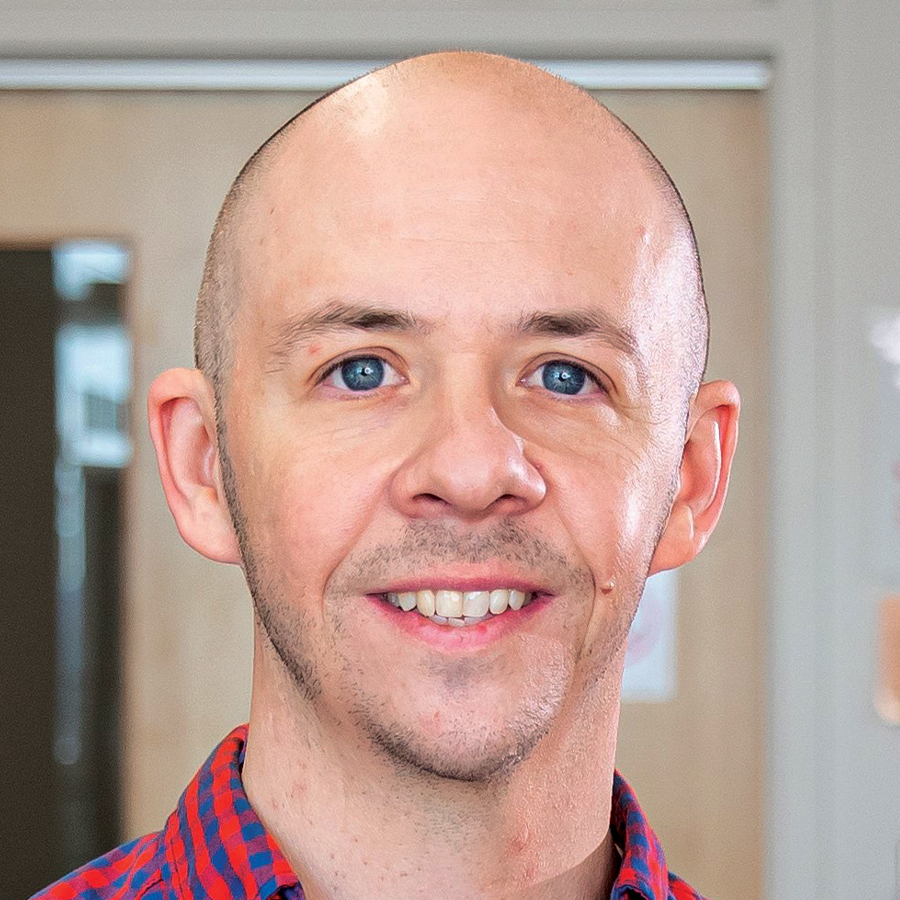 “Atmospheric aerosols, originating from both biogenic and anthropogenic sources, play pivotal roles in climate regulation, air quality, and public health. With support from the Cottrell Scholar Award, my research will address the challenge of accurately identifying these aerosols by distinguishing between brown carbon (BrC) and bioaerosol fluorescence. While fluorescence spectroscopy is instrumental in differentiating aerosol types, BrC can mimic bioaerosol fluorescence, leading to potential misidentification in environmental settings. This research will implement both condensed-phase and particle-phase fluorescence measurements, including excitation-emission matrix (EEM) and time-resolved fluorescence (TRF) spectroscopy. By analyzing the EEM and TRF spectra of primary and secondary BrC, the study aims to more effectively distinguish fluorescence features and associate them with specific aerosol components. This approach is expected to enhance our understanding of aerosol detection and composition, and the outcomes will inform interpretation of fluorescence-based atmospheric field studies and contribute to more effective environmental measurement and monitoring. In addition, this award will support modernizing the Analytical Chemistry curriculum by integrating essential computational skills, including Python programming, data analysis, and experience with computational tools. The initiative updates the traditional course content to better align with current ACS guidelines while remaining accessible to students from a wide range of academic backgrounds. A major aspect of this revision is its potential for adoption across different higher education institutions, as the course’s structure and content have been designed to be both accessible and adaptable for broader implementation at colleges and universities.”
“Atmospheric aerosols, originating from both biogenic and anthropogenic sources, play pivotal roles in climate regulation, air quality, and public health. With support from the Cottrell Scholar Award, my research will address the challenge of accurately identifying these aerosols by distinguishing between brown carbon (BrC) and bioaerosol fluorescence. While fluorescence spectroscopy is instrumental in differentiating aerosol types, BrC can mimic bioaerosol fluorescence, leading to potential misidentification in environmental settings. This research will implement both condensed-phase and particle-phase fluorescence measurements, including excitation-emission matrix (EEM) and time-resolved fluorescence (TRF) spectroscopy. By analyzing the EEM and TRF spectra of primary and secondary BrC, the study aims to more effectively distinguish fluorescence features and associate them with specific aerosol components. This approach is expected to enhance our understanding of aerosol detection and composition, and the outcomes will inform interpretation of fluorescence-based atmospheric field studies and contribute to more effective environmental measurement and monitoring. In addition, this award will support modernizing the Analytical Chemistry curriculum by integrating essential computational skills, including Python programming, data analysis, and experience with computational tools. The initiative updates the traditional course content to better align with current ACS guidelines while remaining accessible to students from a wide range of academic backgrounds. A major aspect of this revision is its potential for adoption across different higher education institutions, as the course’s structure and content have been designed to be both accessible and adaptable for broader implementation at colleges and universities.”
Nick Jackson, Chemistry, University of Illinois at Urbana-Champaign – Electronic Dynamics Using Coarse-Grained Molecular Representations
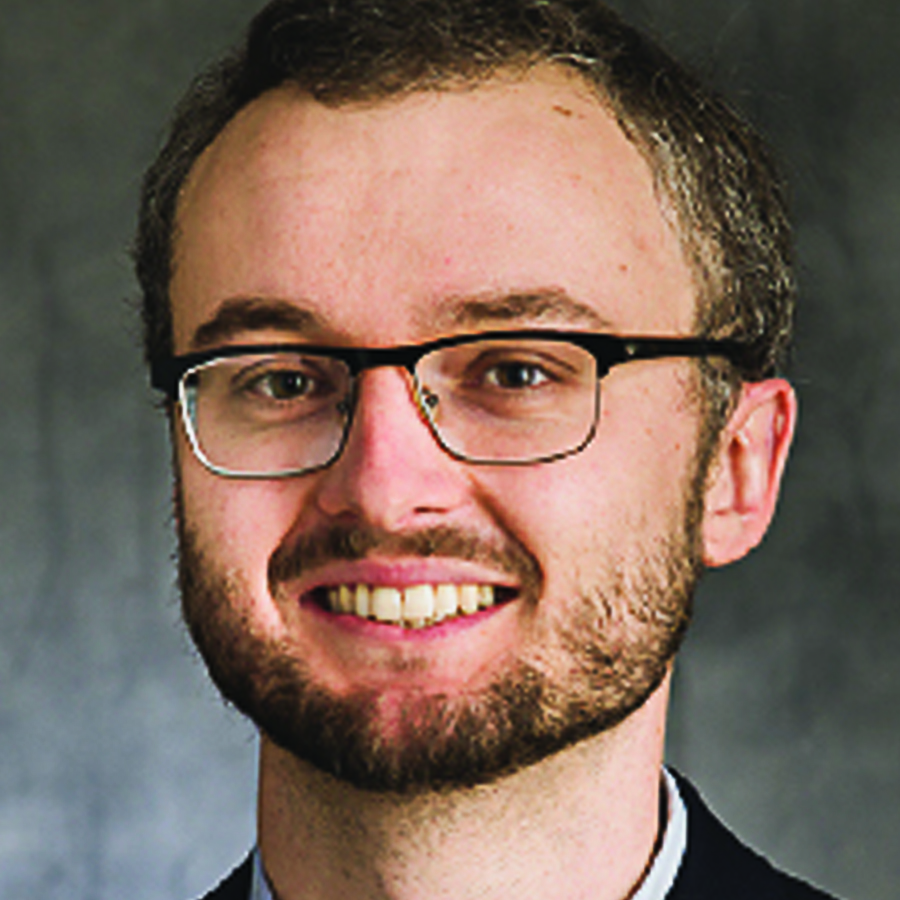 “This research will leverage machine learning to describe electronic dynamics in large molecular systems from a computationally cheaper coarse-grained molecular representation. This will enable simulations of electronic dynamics at unprecedented length and timescales for disordered molecular systems. This research is coupled with a targeted effort to get the essentials of statistics, programming, and machine learning into the chemistry curriculum at the University of Illinois at Urbana-Champaign for early stage undergraduates, and to reinforce it in subsequent years.”
“This research will leverage machine learning to describe electronic dynamics in large molecular systems from a computationally cheaper coarse-grained molecular representation. This will enable simulations of electronic dynamics at unprecedented length and timescales for disordered molecular systems. This research is coupled with a targeted effort to get the essentials of statistics, programming, and machine learning into the chemistry curriculum at the University of Illinois at Urbana-Champaign for early stage undergraduates, and to reinforce it in subsequent years.”
Alvine Kamaha, Physics, University of California, Los Angeles – Improving Background Mitigation in Dark Matter Searches and Improving the Diversity of the Workforce in Dark Matter Searches
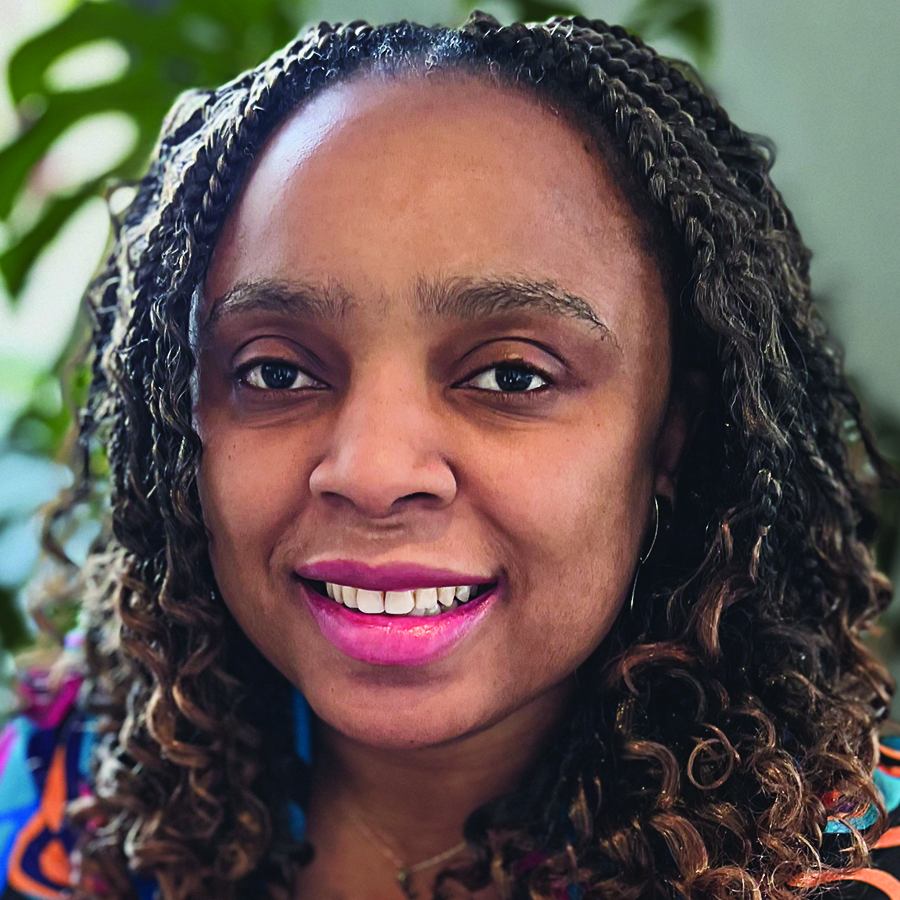 “85% of the universe’s matter is so-called dark matter, an invisible substance that has been present since the early universe and acted as glue to enable the formation of large-scale structures like our own Milky Way galaxy. Discovering this matter will help us understand our universe’s evolution – including the impact of the Big Bang – as well as its fate. Dark matter could consist of Weakly Interacting Massive Particles (WIMPs), which are hypothetical elementary particles that interact with gravity and a weak nuclear-type force. Particle physicists have been searching for these WIMP dark matter and other particle candidates by building super-sensitive detectors to detect rare scatters off nuclei in underground-based experiments. However, these detectors are also sensitive to particles from regular matter, which often produce signals that mimic the dark matter signals. Reducing this background noise is therefore paramount in the search for the elusive dark matter signal. In my lab we will build a prototype detector for nuclear background calibrations in xenon detectors (a leading detector technology) that will help ensure that a positive experimental result is indeed an actual signal and not noise due to an incomplete understanding of the regular particle processes. This detector and other in-situ detectors purchased for general particle characterization will be used in the educational arm of my project to build a more inclusive particle physics research laboratory at UCLA in an effort to strengthen and enhance the undergraduate research experience of transfer students.”
“85% of the universe’s matter is so-called dark matter, an invisible substance that has been present since the early universe and acted as glue to enable the formation of large-scale structures like our own Milky Way galaxy. Discovering this matter will help us understand our universe’s evolution – including the impact of the Big Bang – as well as its fate. Dark matter could consist of Weakly Interacting Massive Particles (WIMPs), which are hypothetical elementary particles that interact with gravity and a weak nuclear-type force. Particle physicists have been searching for these WIMP dark matter and other particle candidates by building super-sensitive detectors to detect rare scatters off nuclei in underground-based experiments. However, these detectors are also sensitive to particles from regular matter, which often produce signals that mimic the dark matter signals. Reducing this background noise is therefore paramount in the search for the elusive dark matter signal. In my lab we will build a prototype detector for nuclear background calibrations in xenon detectors (a leading detector technology) that will help ensure that a positive experimental result is indeed an actual signal and not noise due to an incomplete understanding of the regular particle processes. This detector and other in-situ detectors purchased for general particle characterization will be used in the educational arm of my project to build a more inclusive particle physics research laboratory at UCLA in an effort to strengthen and enhance the undergraduate research experience of transfer students.”
Lawrence Lee, Physics, University of Tennessee, Knoxville – Developing Muon Collider Technologies: Building Tomorrow's Discovery Collider Today
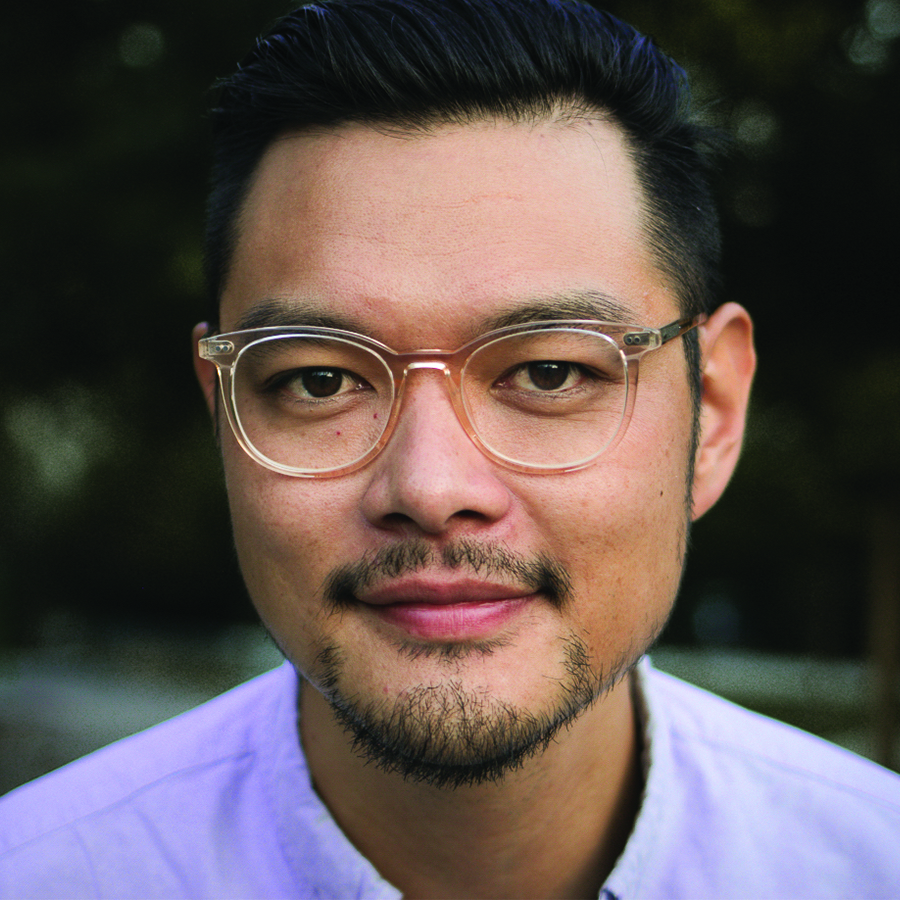 “To answer some of the most fundamental questions in physics, new energy scales need to be probed in the laboratory. One of the research programs in my group is to study ways to reach higher energies by colliding intense beams of muons, the heavier cousin of the electron. Building a muon collider for the first time would require overcoming numerous technological hurdles stemming from the muon’s metastability. Designing solutions to these accelerator challenges can enable newfound insight into the nature of the Higgs boson and dark matter, while looking for surprises in the complete unknown. Creating an effective workforce for the future of this work requires engaging a community with a wide range of experiences and perspectives. The community college pipeline plays a crucial role in the research pipeline, providing opportunity to many students who for a variety of reasons may have pursued a transfer-based path. I aim to strengthen the physics transfer pipeline with targeted support, addressing challenges unique to the transfer experience such as non-uniform preparation and so-called “transfer shock.” This will include dedicated mentoring pathways and increased coordination with community colleges.”
“To answer some of the most fundamental questions in physics, new energy scales need to be probed in the laboratory. One of the research programs in my group is to study ways to reach higher energies by colliding intense beams of muons, the heavier cousin of the electron. Building a muon collider for the first time would require overcoming numerous technological hurdles stemming from the muon’s metastability. Designing solutions to these accelerator challenges can enable newfound insight into the nature of the Higgs boson and dark matter, while looking for surprises in the complete unknown. Creating an effective workforce for the future of this work requires engaging a community with a wide range of experiences and perspectives. The community college pipeline plays a crucial role in the research pipeline, providing opportunity to many students who for a variety of reasons may have pursued a transfer-based path. I aim to strengthen the physics transfer pipeline with targeted support, addressing challenges unique to the transfer experience such as non-uniform preparation and so-called “transfer shock.” This will include dedicated mentoring pathways and increased coordination with community colleges.”
Chris Li, Chemistry, University at Buffalo SUNY – Development of a Plasma Electrochemical System for Air-to-Ammonia Conversion
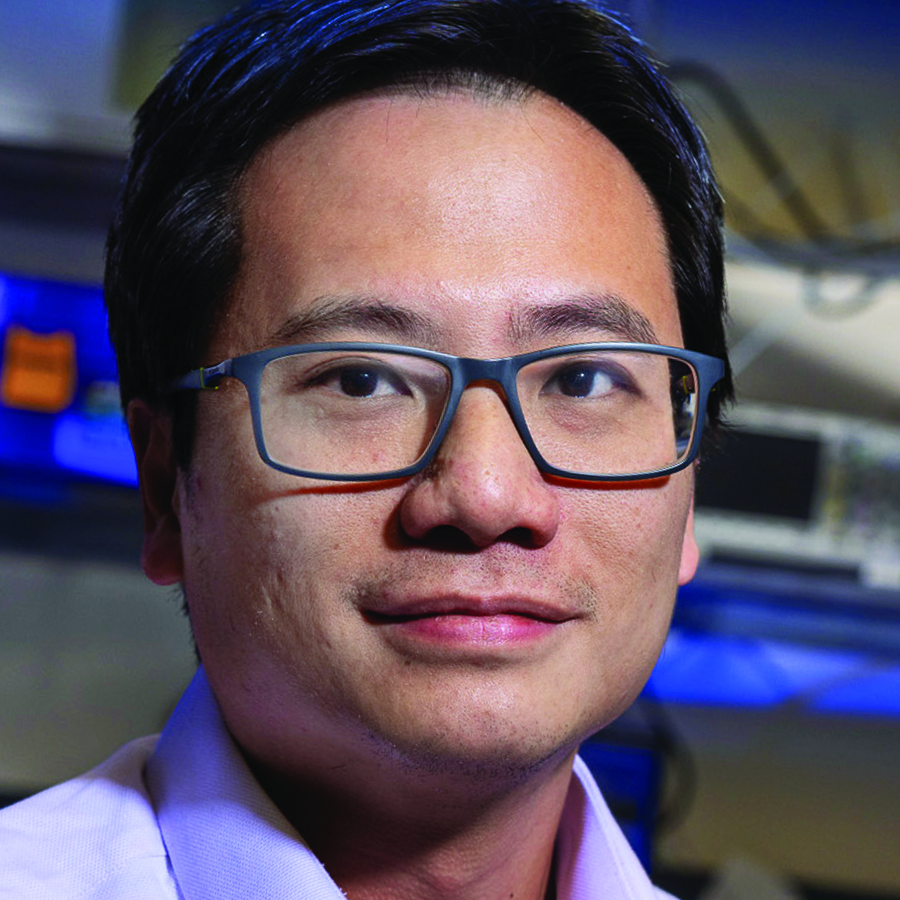 “My group is developing a plasma-electrochemical system to produce ammonia, an important industrial chemical, directly from air. We will investigate the activation chemistry of nitrogen in a plasma field and the reaction pathways of NOxHy species to ammonia in an electrochemical setting, enabling us to achieve both high production rates and high selectivity for ammonia. This study will provide fundamental insights into an important industrial chemical reaction and demonstrate a new platform for green chemical synthesis. Our educational efforts focus on developing a series of low-cost DIY analytical instruments, course materials, and accompanying video lectures for teaching analytical chemistry. The goal of these tools is to provide undergraduate students with hands-on experience to better understand analytical instruments and to improve access to chemistry education for resource-restricted communities.”
“My group is developing a plasma-electrochemical system to produce ammonia, an important industrial chemical, directly from air. We will investigate the activation chemistry of nitrogen in a plasma field and the reaction pathways of NOxHy species to ammonia in an electrochemical setting, enabling us to achieve both high production rates and high selectivity for ammonia. This study will provide fundamental insights into an important industrial chemical reaction and demonstrate a new platform for green chemical synthesis. Our educational efforts focus on developing a series of low-cost DIY analytical instruments, course materials, and accompanying video lectures for teaching analytical chemistry. The goal of these tools is to provide undergraduate students with hands-on experience to better understand analytical instruments and to improve access to chemistry education for resource-restricted communities.”
Adam Miller, Astronomy, Northwestern University – Simultaneously Early and Late: Leveraging LS4 and LSST to Understand the Physics of White Dwarf Supernovae
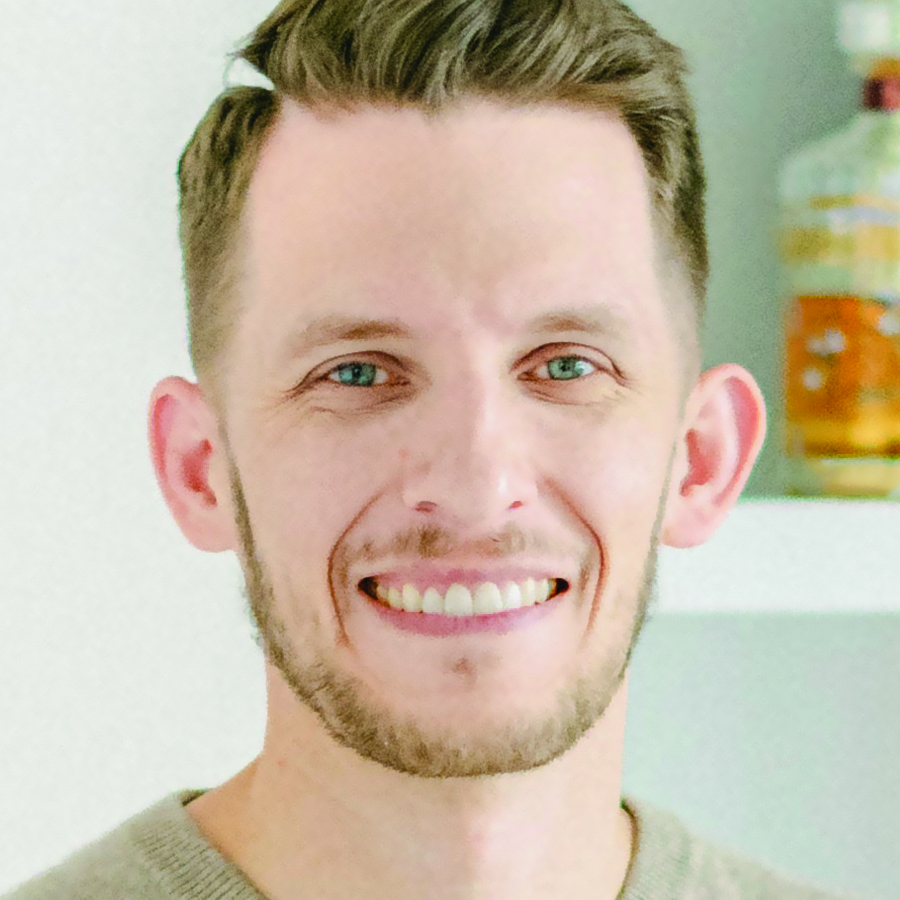 “Some white dwarf (WD) stars in binary star systems can become unstable and experience runaway nuclear fusion leading to a spectacular explosion know as a Type Ia supernova (SN Ia). The study of SNe Ia led to the discovery of the accelerating Universe and Dark Energy, work that awarded the Nobel prize. My Cottrell Scholar program aims to determine which binary star systems can produce a SN Ia by conducting a novel experiment combining observations from two new time-domain surveys, the Vera C. Rubin Observatory's Legacy Survey of Space and Time (LSST) and the La Silla Schmidt Southern Survey (LS4) to determine the progenitors of SNe Ia. LS4 will capture nearby supernovae when they are young and these observations will be combined with very-late observations from LSST to produce results that are greater than the sum of their parts. My education component is motivated by challenges associated with retaining Ph.D. students from all groups in society. Building on my experience as Director of the LSST-DA Data Science Fellowship Program (DSFP), a unique data-science training program for astronomy graduate students, I will implement the ONBOARD program for matriculating physics and astronomy Ph.D. students at Northwestern. The matriculation program will provide critical training in scientific computing, which is transferrable to other universities, and establish multiple connections between students and potential mentors as they begin graduate school to foster a more welcoming community within the department.”
“Some white dwarf (WD) stars in binary star systems can become unstable and experience runaway nuclear fusion leading to a spectacular explosion know as a Type Ia supernova (SN Ia). The study of SNe Ia led to the discovery of the accelerating Universe and Dark Energy, work that awarded the Nobel prize. My Cottrell Scholar program aims to determine which binary star systems can produce a SN Ia by conducting a novel experiment combining observations from two new time-domain surveys, the Vera C. Rubin Observatory's Legacy Survey of Space and Time (LSST) and the La Silla Schmidt Southern Survey (LS4) to determine the progenitors of SNe Ia. LS4 will capture nearby supernovae when they are young and these observations will be combined with very-late observations from LSST to produce results that are greater than the sum of their parts. My education component is motivated by challenges associated with retaining Ph.D. students from all groups in society. Building on my experience as Director of the LSST-DA Data Science Fellowship Program (DSFP), a unique data-science training program for astronomy graduate students, I will implement the ONBOARD program for matriculating physics and astronomy Ph.D. students at Northwestern. The matriculation program will provide critical training in scientific computing, which is transferrable to other universities, and establish multiple connections between students and potential mentors as they begin graduate school to foster a more welcoming community within the department.”
Ryan Poling-Skutvik, Physics, University of Rhode Island – Developing a Dynamic Taxonomy of Soft Matter for a New Era of Material Design
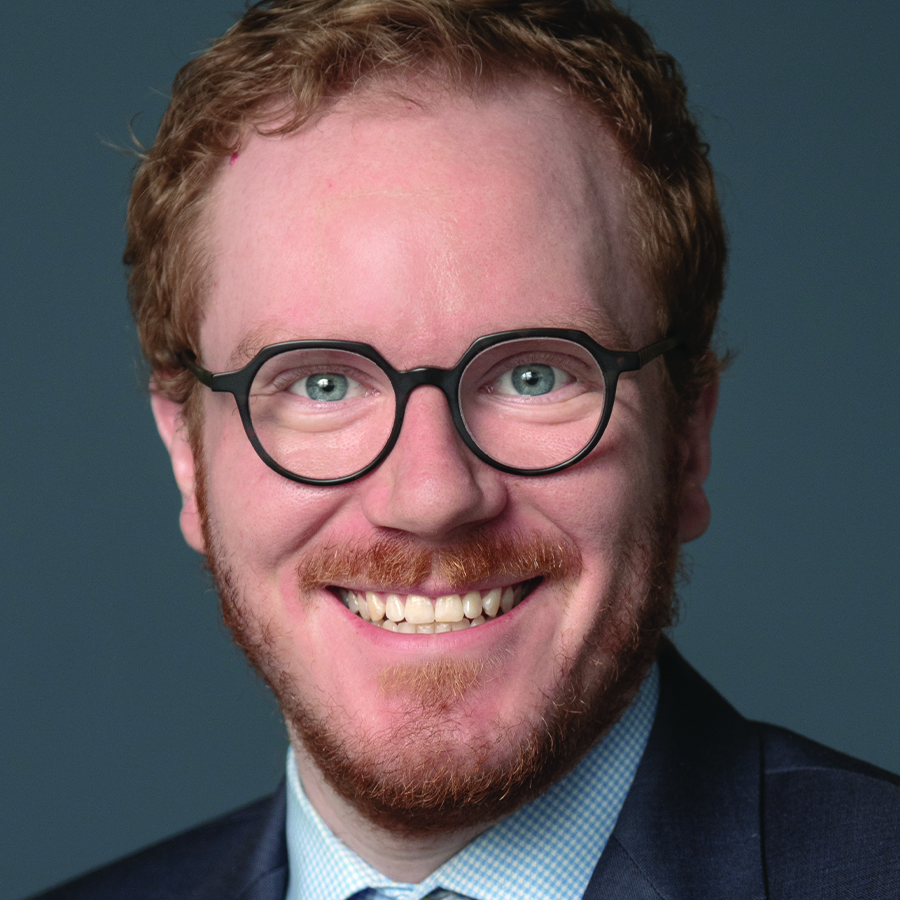 “The fundamental axiom of materials science is that structure determines function, but for soft materials in which thermal forces result in dynamic relaxations, this axiom breaks down and we struggle to predict and control their mechanical properties. Our work inverts this paradigm to focus on dynamics, in combination with molecular interactions, as the fundamental mechanism governing soft material properties. In this research plan, we will incorporate dynamic descriptors into a rational taxonomic structure that simplifies our understanding of soft matter, enabling predictive control and design. Additionally, we will leverage the insights generated through this research to design and implement a new course at the University of Rhode Island that introduces young students to the field of soft matter physics through a combination of lectures, hands-on experimentation, and connections to culture and society. This course will challenge students to directly connect physical principles to real-world experiences to ground scientific insight in clear, practical examples and more deeply motivate student learning.”
“The fundamental axiom of materials science is that structure determines function, but for soft materials in which thermal forces result in dynamic relaxations, this axiom breaks down and we struggle to predict and control their mechanical properties. Our work inverts this paradigm to focus on dynamics, in combination with molecular interactions, as the fundamental mechanism governing soft material properties. In this research plan, we will incorporate dynamic descriptors into a rational taxonomic structure that simplifies our understanding of soft matter, enabling predictive control and design. Additionally, we will leverage the insights generated through this research to design and implement a new course at the University of Rhode Island that introduces young students to the field of soft matter physics through a combination of lectures, hands-on experimentation, and connections to culture and society. This course will challenge students to directly connect physical principles to real-world experiences to ground scientific insight in clear, practical examples and more deeply motivate student learning.”
Liliana Rivera Sandoval, Astronomy, University of Texas Rio Grande Valley – Investigating the Effects of Stellar Interactions in Globular Clusters through their Compact Binary Population
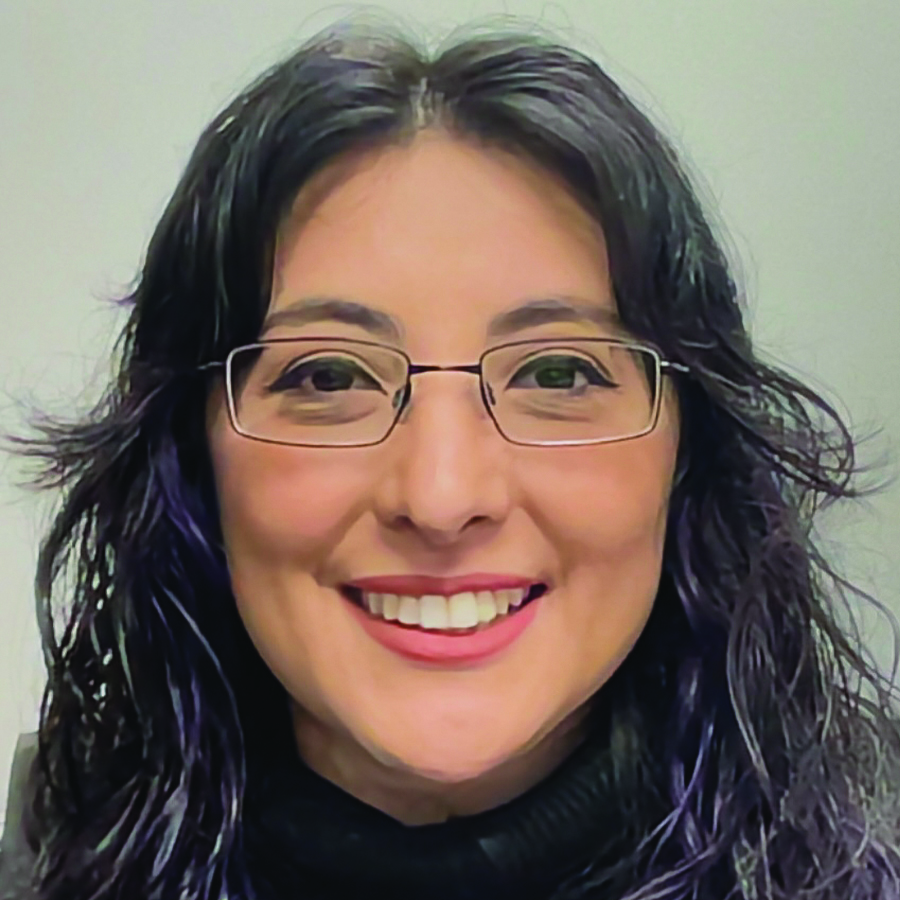 "The Cottrell Scholar Award will allow me to study the effects of stellar interactions on binary stars, particularly those that harbor the remnants of dead stars. I will use data ranging from X-rays to radio waves of various exotic binary populations, along with state-of-the-art models to investigate how stellar dynamics influence the formation and destruction of binaries in highly dense stellar environments known as globular clusters. This research will provide valuable insights into stellar evolution and will explore its broader cosmological implications. Additionally, the educational component of my award will provide a broad range of students with opportunities to engage more closely with experts in astronomy and space sciences, fostering collaborations, participation in research projects, and helping them build a stronger foundation for their academic and career goals. The award will also support initiatives aimed at highlighting the importance of women in astronomy and increasing access to science for non-academic communities."
"The Cottrell Scholar Award will allow me to study the effects of stellar interactions on binary stars, particularly those that harbor the remnants of dead stars. I will use data ranging from X-rays to radio waves of various exotic binary populations, along with state-of-the-art models to investigate how stellar dynamics influence the formation and destruction of binaries in highly dense stellar environments known as globular clusters. This research will provide valuable insights into stellar evolution and will explore its broader cosmological implications. Additionally, the educational component of my award will provide a broad range of students with opportunities to engage more closely with experts in astronomy and space sciences, fostering collaborations, participation in research projects, and helping them build a stronger foundation for their academic and career goals. The award will also support initiatives aimed at highlighting the importance of women in astronomy and increasing access to science for non-academic communities."
Sabrina Stierwalt, Astronomy, Occidental College – Fostering Community in Undergraduate Physics Students through Community Based Learning and Innovative Research
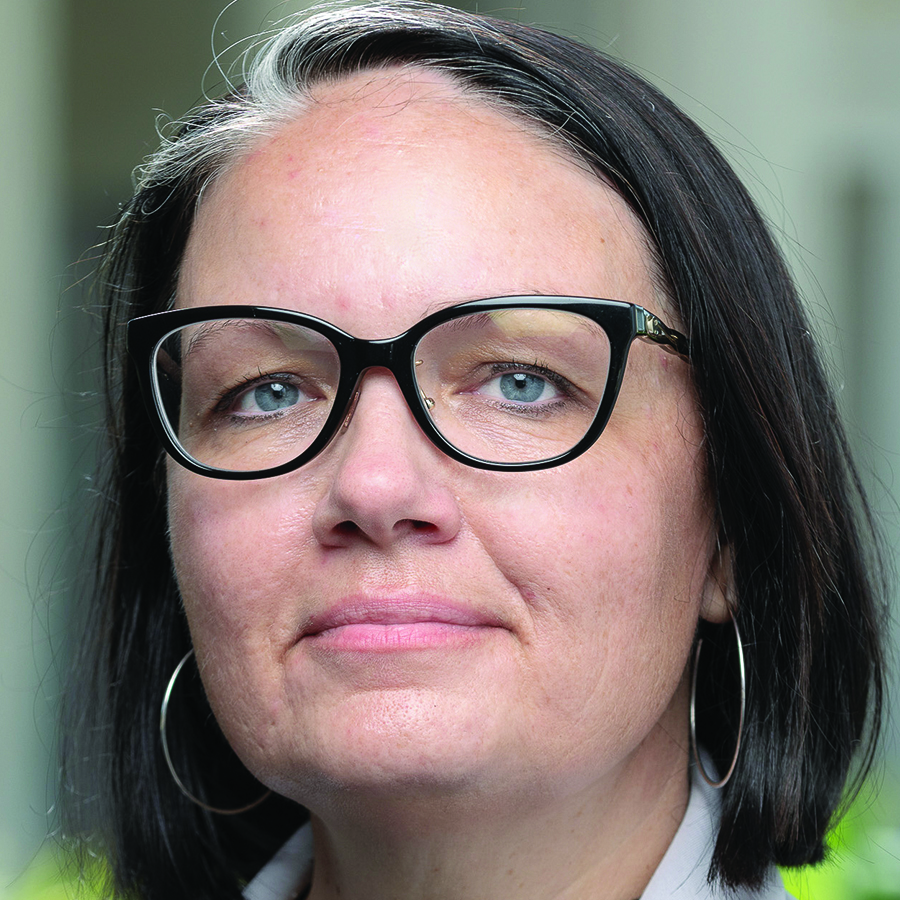 “Most of what we know about the smallest galaxies in the universe comes from studies of our closest galaxy neighbors. However, the evolution of these nearby galaxies is strongly affected by the dominating presence of our much more massive Milky Way’s gravitational influence. My work uses innovative search techniques to find groups of small galaxies isolated from a massive neighbor. Studying these isolated groups will push the boundaries of what we know about the evolution of small galaxies before they have merged to form a larger one. As a Cottrell Scholar, I will also build a curriculum that incorporates community-based learning into introductory physics courses. By working on projects in the diverse communities throughout Los Angeles, students can see direct connections between their physics studies and the ability to make real life change.”
“Most of what we know about the smallest galaxies in the universe comes from studies of our closest galaxy neighbors. However, the evolution of these nearby galaxies is strongly affected by the dominating presence of our much more massive Milky Way’s gravitational influence. My work uses innovative search techniques to find groups of small galaxies isolated from a massive neighbor. Studying these isolated groups will push the boundaries of what we know about the evolution of small galaxies before they have merged to form a larger one. As a Cottrell Scholar, I will also build a curriculum that incorporates community-based learning into introductory physics courses. By working on projects in the diverse communities throughout Los Angeles, students can see direct connections between their physics studies and the ability to make real life change.”
V. Ashley Villar, Astronomy, Harvard University – Closing the Gap: Linking Luminous Red Novae to Binary Stellar Evolution
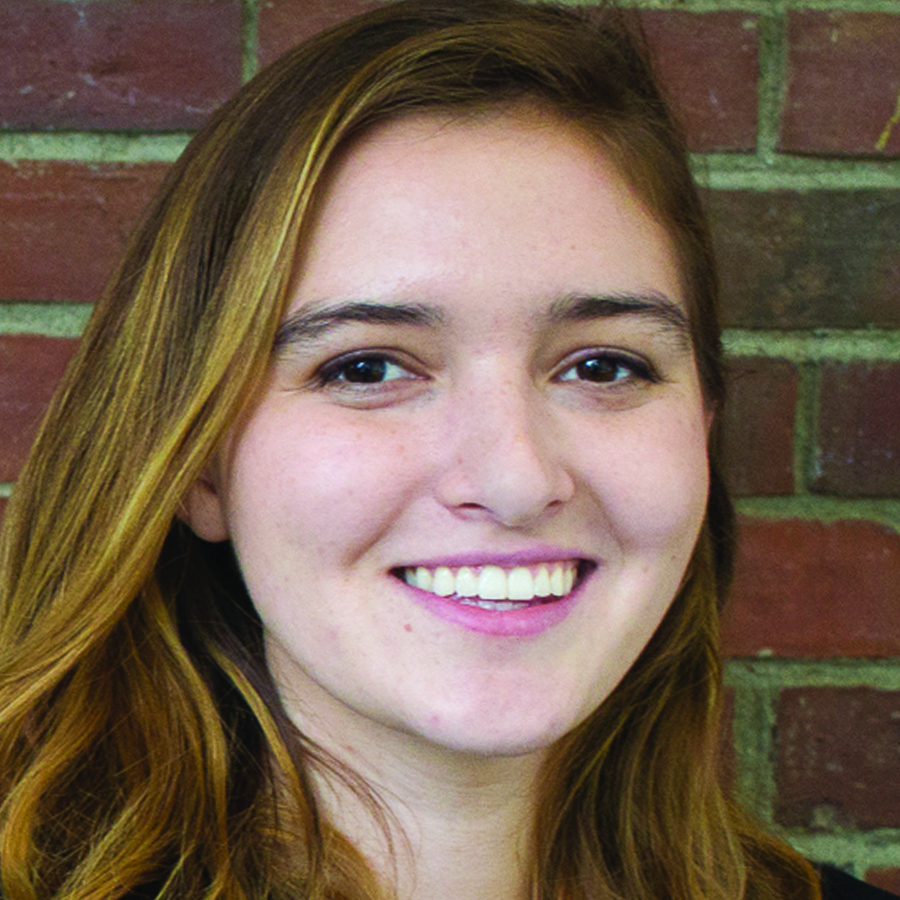 “Stars are the fundamental building blocks of our Cosmos. They create heavy elements, drive the chemical and kinematic histories of galaxies, and birth exotic compact objects (like black holes and neutron stars). Massive stars are particularly important across nearly every field of astrophysics (e.g., supernova, galaxy and gravitational wave science). However, understanding the life cycles of massive stars is complicated by the fact that the vast majority of these stars live with an interacting binary companion. This award investigates one of the only observational means to understand the binary interaction of massive stars to directly test theories of stellar evolution and understand how stars interact / merge. In parallel, the award supports development of a new first-year seminar that encourages students to think like interdisciplinary scientists. This seminar will focus on bridging gaps between scientific disciplines, fostering critical thinking, and equipping students with the tools to tackle complex problems. By incorporating real datasets, developing a shared language across disciplines, and engaging with scientific literature, the course will prepare students to navigate and integrate diverse areas of study. This approach will promote innovative thinking and collaborative problem-solving, essential for future scientific leaders in a data-driven world.”
“Stars are the fundamental building blocks of our Cosmos. They create heavy elements, drive the chemical and kinematic histories of galaxies, and birth exotic compact objects (like black holes and neutron stars). Massive stars are particularly important across nearly every field of astrophysics (e.g., supernova, galaxy and gravitational wave science). However, understanding the life cycles of massive stars is complicated by the fact that the vast majority of these stars live with an interacting binary companion. This award investigates one of the only observational means to understand the binary interaction of massive stars to directly test theories of stellar evolution and understand how stars interact / merge. In parallel, the award supports development of a new first-year seminar that encourages students to think like interdisciplinary scientists. This seminar will focus on bridging gaps between scientific disciplines, fostering critical thinking, and equipping students with the tools to tackle complex problems. By incorporating real datasets, developing a shared language across disciplines, and engaging with scientific literature, the course will prepare students to navigate and integrate diverse areas of study. This approach will promote innovative thinking and collaborative problem-solving, essential for future scientific leaders in a data-driven world.”
Allison Walker, Chemistry, Vanderbilt University – Discovery of Enzyme Catalyzed Chemical Reactions Guided by Artificial Intelligence
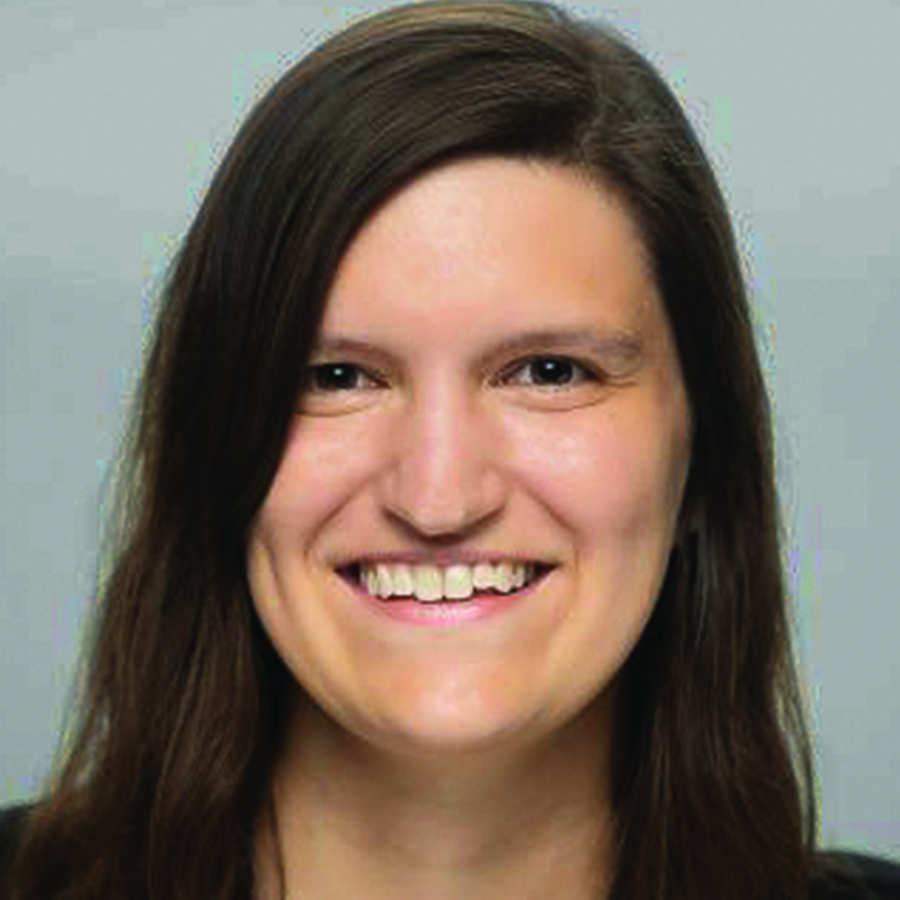 “Molecules produced by living things are synthesized with the help of enzymes, which are proteins that catalyze chemical reactions and have been used to help chemists synthesize new molecules. Previous work relied mostly on luck to discover enzymes that enable interesting chemical reactions. With the support of the Cottrell Scholar Award, I will develop methods based on Artificial Intelligence for the discovery of new enzymes that catalyze interesting and useful chemical reactions. This award will also support the development of courses that will train chemistry students in how to apply programming and artificial intelligence to problems in chemistry and biochemistry. These courses will include a research course where students will get hands-on experience in combining computation and lab work to discover new enzymes.”
“Molecules produced by living things are synthesized with the help of enzymes, which are proteins that catalyze chemical reactions and have been used to help chemists synthesize new molecules. Previous work relied mostly on luck to discover enzymes that enable interesting chemical reactions. With the support of the Cottrell Scholar Award, I will develop methods based on Artificial Intelligence for the discovery of new enzymes that catalyze interesting and useful chemical reactions. This award will also support the development of courses that will train chemistry students in how to apply programming and artificial intelligence to problems in chemistry and biochemistry. These courses will include a research course where students will get hands-on experience in combining computation and lab work to discover new enzymes.”
Marissa Weichman, Chemistry, Princeton University – Quantum State Resolution of Aromatic Molecules for Laboratory Astrochemistry
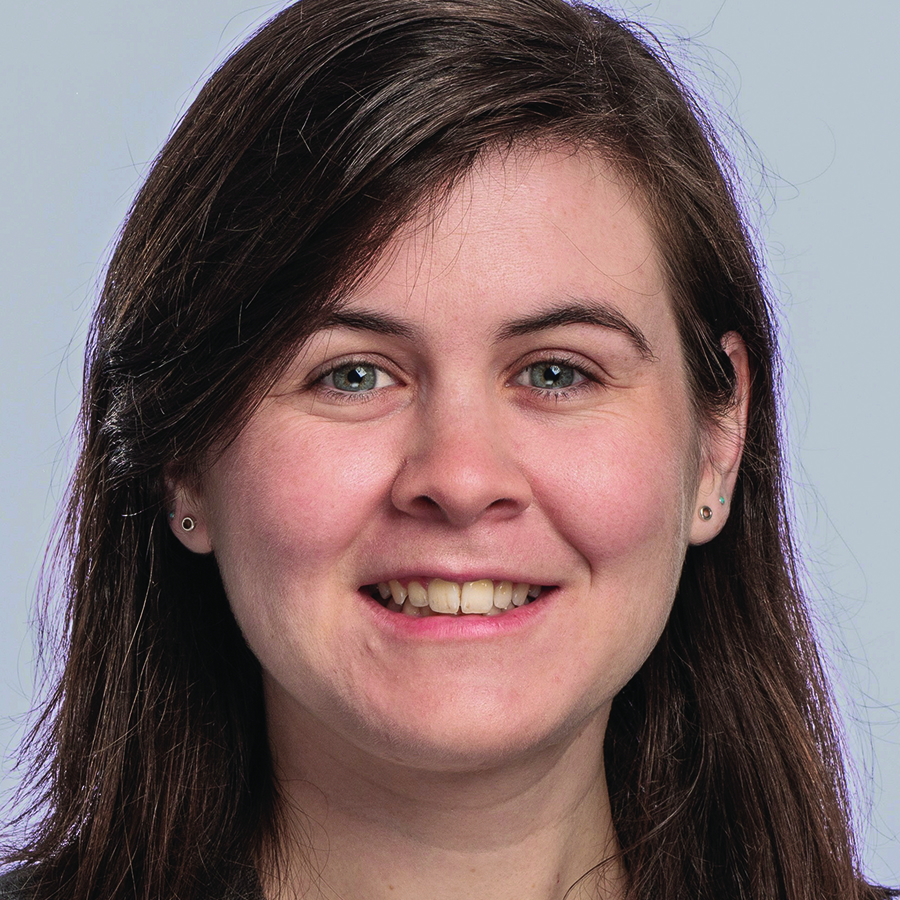 “Light beaming to us across space encodes features arising from the absorption and emission of photons by a menagerie of interstellar molecules. Concrete identification of these astrochemical species is key to understanding star, planet, and galaxy formation and the prebiotic origins of life. Interpretation and assignment of observational data is driven by laboratory spectroscopy of known molecules. It is therefore essential that we develop next-generation laboratory spectroscopies with improved resolution, sensitivity, and scope. Here, we will harness cavity-enhanced frequency comb spectroscopy and cryogenic molecular cooling methods to fully resolve rovibrational structure in large molecules predicted to carry astrochemical bands. We will target a class of carbonaceous molecules known as polycyclic aromatic hydrocarbons and their derivatives. We will use our laboratory spectra both to re-interpret existing observational infrared emission data and to guide new observational campaigns. This work will improve our understanding of the chemical composition of astrophysical environments and establish new records in the size and complexity of molecular systems that can be studied with complete quantum state resolution. We are also revitalizing Princeton’s undergraduate quantum chemistry course, CHM 305, “The Quantum World,” with aims to improve quantitative and conceptual learning outcomes in students from a broad range of academic backgrounds; improve attitudes towards and sense of belonging in quantum; and increase the number of course alumni pursuing further quantum-adjacent coursework, research, and careers.”
“Light beaming to us across space encodes features arising from the absorption and emission of photons by a menagerie of interstellar molecules. Concrete identification of these astrochemical species is key to understanding star, planet, and galaxy formation and the prebiotic origins of life. Interpretation and assignment of observational data is driven by laboratory spectroscopy of known molecules. It is therefore essential that we develop next-generation laboratory spectroscopies with improved resolution, sensitivity, and scope. Here, we will harness cavity-enhanced frequency comb spectroscopy and cryogenic molecular cooling methods to fully resolve rovibrational structure in large molecules predicted to carry astrochemical bands. We will target a class of carbonaceous molecules known as polycyclic aromatic hydrocarbons and their derivatives. We will use our laboratory spectra both to re-interpret existing observational infrared emission data and to guide new observational campaigns. This work will improve our understanding of the chemical composition of astrophysical environments and establish new records in the size and complexity of molecular systems that can be studied with complete quantum state resolution. We are also revitalizing Princeton’s undergraduate quantum chemistry course, CHM 305, “The Quantum World,” with aims to improve quantitative and conceptual learning outcomes in students from a broad range of academic backgrounds; improve attitudes towards and sense of belonging in quantum; and increase the number of course alumni pursuing further quantum-adjacent coursework, research, and careers.”
